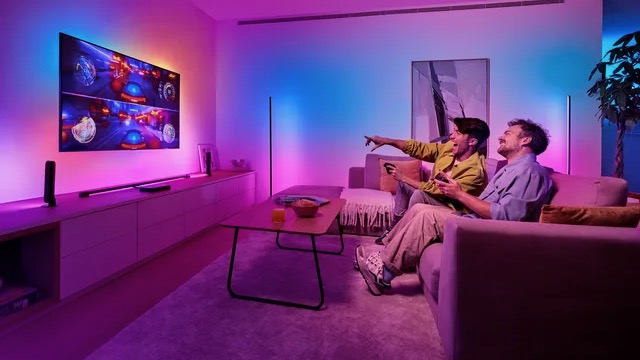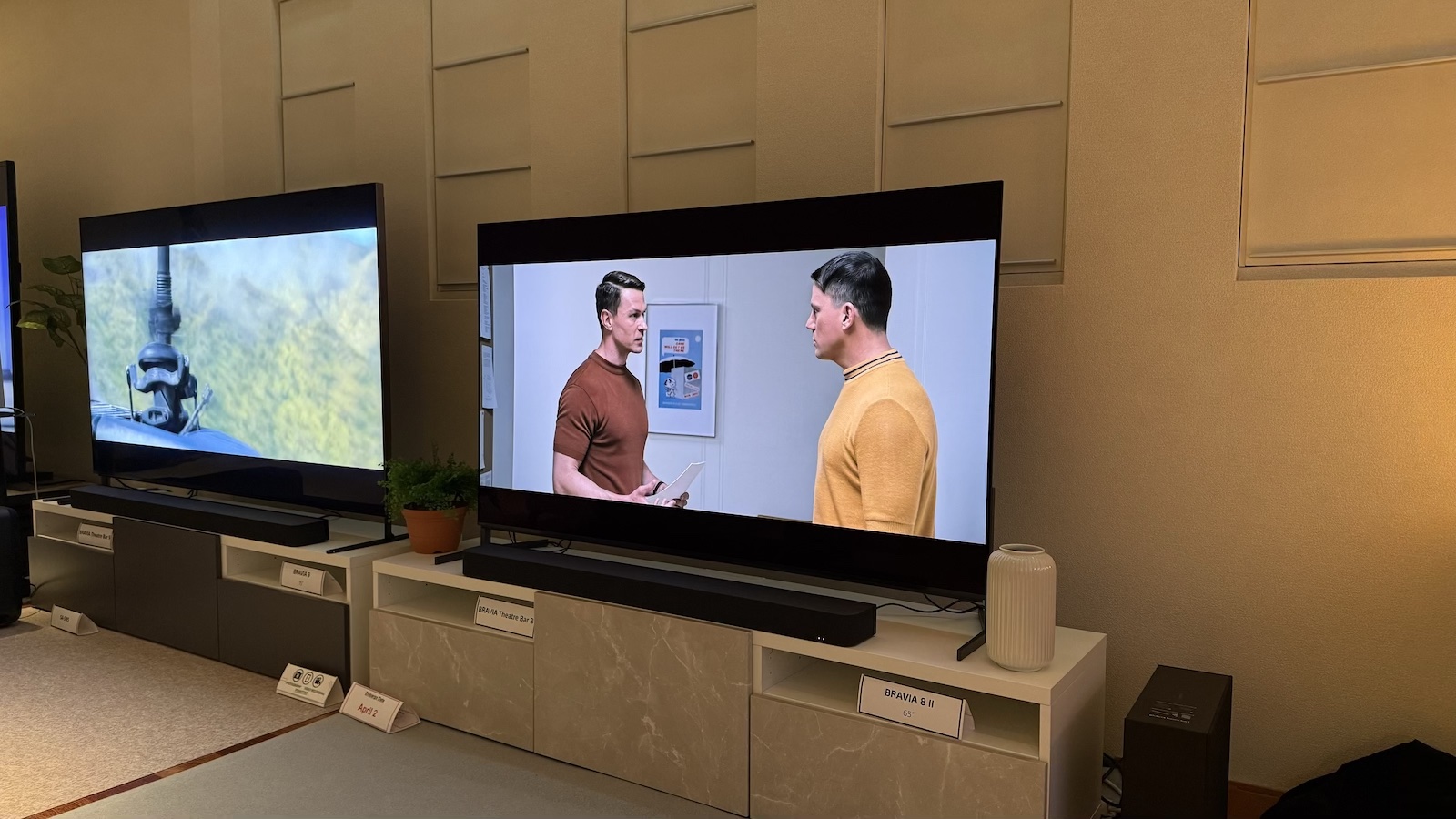The new, pricier Philips Hue Play sync box 8K is made for gamers
Supports 4K/120Hz and HDMI 2.1

Philips has announced a second version of its Hue Play HDMI sync box, and this one is aimed at gamers.
The Hue Play HDMI sync box 8K plays nice with 8K content at 60Hz, or 4K at 120Hz, the latter being ideal for gamers. The HDMI 2.1 video standard is also supported, unlocking gaming features such as Automatic Low Latency Mode (ALLM) and Variable Refresh Rate (VRR). Like its predecessor, it also supports the Dolby Vision and HDR10+ formats of HDR.
The downside is that it is more expensive. In the US, it sells for $350 – that's $50 pricier than the first-gen model. We still await UK and Australian pricing.
The sync box syncs Philips Hue lights to whatever is on your TV screen. It works with Philips Hue's smart lights, and its performance is customisable from within the Hue app. However, you will need to buy a Philips Hue Bridge (£50) and the Hue lights themselves separately (£160 for the 55-inch TV Hue Play gradient lightstrip, plus extra for additional lights), so it's not a one-stop shop.
The other downside is that it works only with content shown from devices plugged into your TV via HDMI. So if you want the lights to flash in time with Bridgerton, you will need to watch Netflix through a streaming device rather than the app on your TV. You can download an app version of the sync box to certain Samsung TVs, but it costs £115 / $130 / AU$200, plus the price of the Hue lights.
Elsewhere, the Philips Hue app now lets you add multiple Bridges without having to create a separate account for each. Each Bridge supports only around 50 lights, so this could be handy if you want to fill your home with smart lights.
MORE:
Get the What Hi-Fi? Newsletter
The latest hi-fi, home cinema and tech news, reviews, buying advice and deals, direct to your inbox.
Read our Philips OLED809 review
Check out Philips' 2024 TV range
Best TVs: Brilliant budget to premium 4K Ultra HD
Joe has been writing about tech for 20 years, first on staff at T3 magazine, then in a freelance capacity for Stuff, The Sunday Times Travel Magazine (now defunct), Men's Health, GQ, The Mirror, Trusted Reviews, TechRadar and many more. His specialities include all things mobile, headphones and speakers that he can't justifying spending money on.

